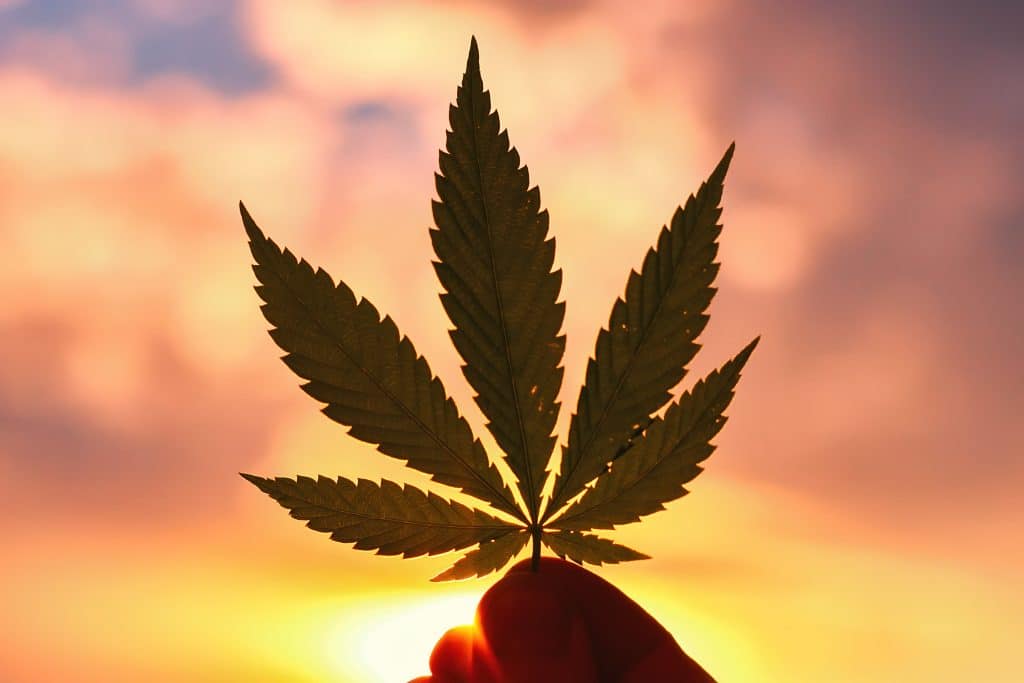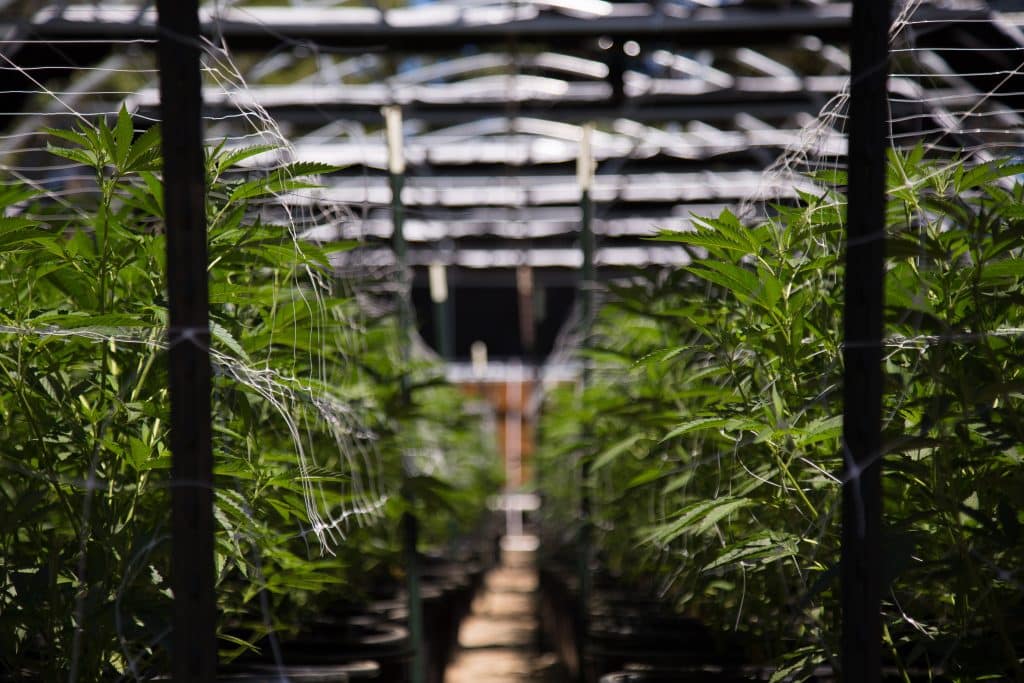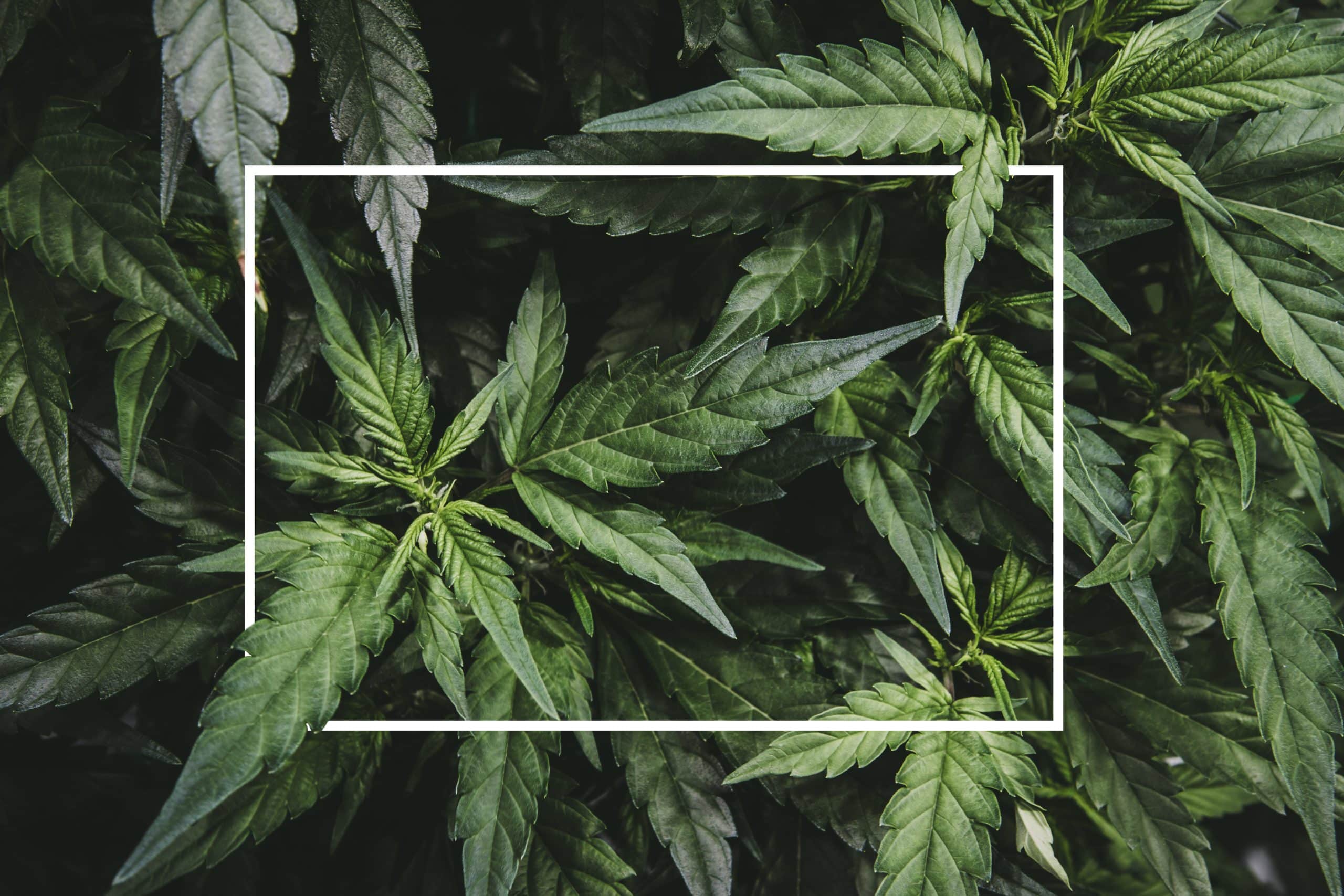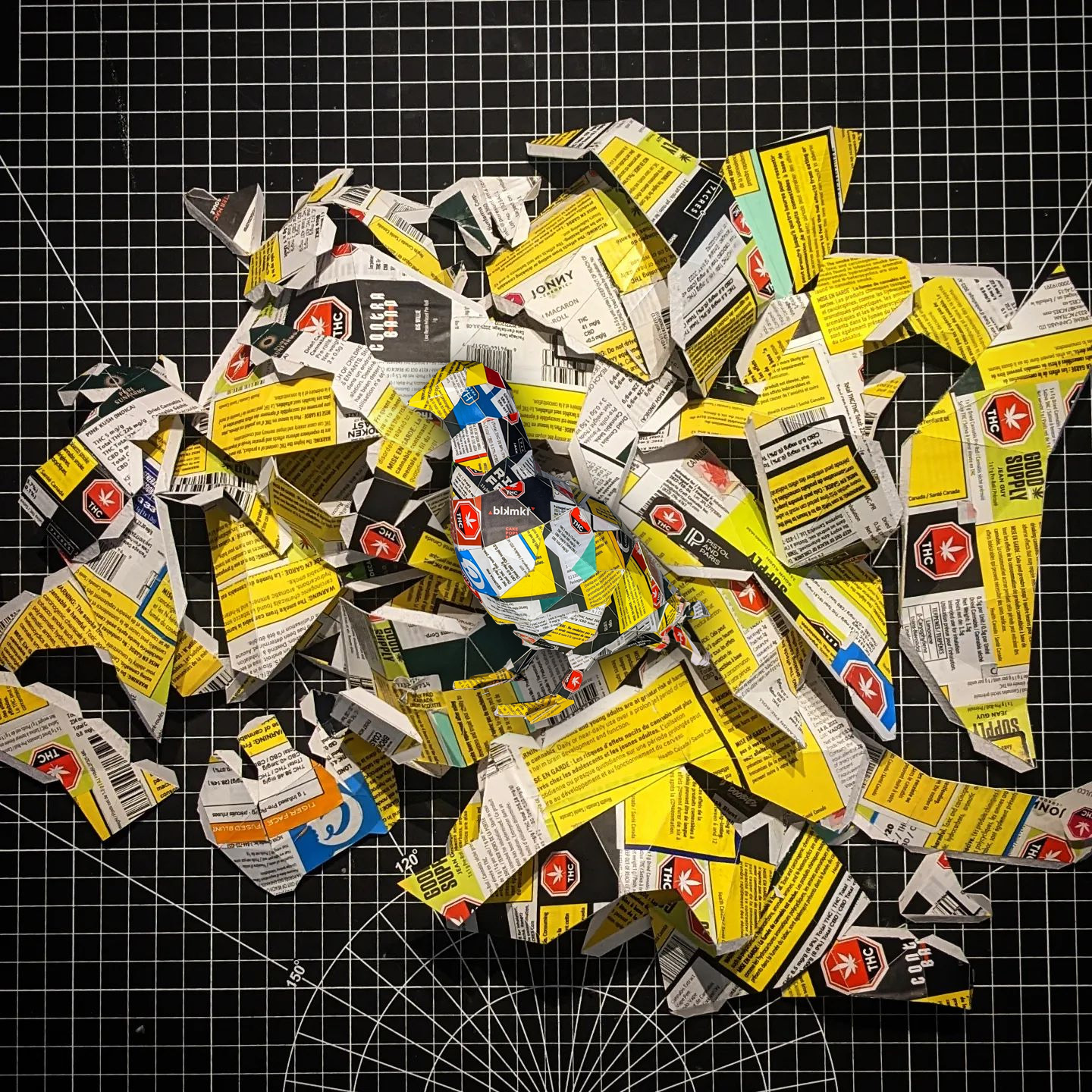The Emerald Cup, which took place on the 10th December 2022 in Santa Rosa, CA, is nothing less than the cannabis event of the year. Now in its 19th year, it’s the event that broke the mold, and set the tone for all other cannabis trade fairs worldwide. The event founder, Tim Blake, is a cannabis OG who first ran the Cup as an underground event in northern California’s famous Emerald Triangle. Today, he’s become a champion of sun-grown craft cannabis and legacy cultivators.
Though the competition is open to all types of cannabis, indoor and outdoor, commercial and craft, year after year, sun-grown wins the top awards. In this interview, Blake dives into the history of California’s cannabis market, explains the appeal of sun-grown cannabis, and gives his insights on what needs to change to bridge the gap between commercial and craft cannabis, saying, “we need each other.”
QUESTION: The Emerald Cup has been going for 19 years and continues to get stronger every year. How did it all begin?
In America, we have county fairs to celebrate the Fall harvest, enjoy some healthy competition, and a chance to showcase local food and animals. I thought, why can’t we do the same thing for cannabis? People thought we were crazy. Back then, most people were growing indoors, and we were an outdoor sun-grown flower competition. But we decided to go for it, and disguised the first event as a birthday party, didn’t even put a flyer out. Most people thought we’d still get arrested because we held it at my place, Area 101. But about two-dozen vendors showed up and a few hundred people, and we pulled it off.
QUESTION: In what ways has The Emerald Cup grown?

From that initial contest, we now have almost 50 contests and 100 judges, and we had more than 700 entries last year. It’s become a fixture for the whole community. It’s the largest cannabis competition in the world, and we have people coming from all over the globe to attend the event. In California, it’s the pre-eminent event to win, and people have made careers and brands off winning or placing in the Cup. When Leo from Aficionado won Best Flower back into 2016, the price of his seeds suddenly went up to $500 a pack. Zkittlez, Ridgeline Farms and OM Edibles are some of other winners, and over the years there are a dozen brands that have become household names after winning one of our competitions. A couple years ago, an indoor brand called Connected won, and they got a $20 million deal off that win.
In the beginning, the competition wasn’t really a consumer show it was for farmers in the mountains. When we moved to Santa Rosa, people thought we were abandoning them. But then they saw how much business we brought in and realized how important it was to come out of the hills and meet with the consumers. Since legalization in 2017, I’ve been saying to farmers, vendors and sponsors that the best place for us is L.A., the biggest cannabis marketplace in the world. We finally made it down there in 2021, and we’re going back next year with an even bigger show.
QUESTION: What is the judging process like?
Because it’s become really valuable to win one of our awards, we make sure to run a fair contest. We take our time with the judging process, it’s done over weeks, and the judges get together several times. It started out as a celebration of the Fall harvest, so flower would come to us in October, we would judge them in November and have the awards ceremony in December.
But when things became legal, farmers couldn’t just bring their flower to one of our sites, they had to give it one of their distributors, it had to be packaged and tested, returned to the distributor, and then dropped off at one of our sites. It became such a complicated process that our judges were getting about 5 days to make a decision, and it just wasn’t enough time. So, we decided to push the contest into the new year, to do the judging in February and March, and host the awards in May in L.A.
We appreciate you joining us. Sign up for the Cannadelics Weekly Newsletter to get updates direct to your email; and for sweet offers on cannabis flowers, vapes, edibles, smoking equipment, cannabinoid compounds some psychedelic products, and much, much more. Everyone get stoned responsibly!
QUESTION: You’ve got a long history in the cannabis business? How did you get into the game?
I’ve been in the cannabis business for more than 50 years, and started before there was an Emerald Triangle, before there was anyone growing up in Humboldt or Mendocino. I grew up in a beach town near Santa Cruz in the 60s, the kind of place with lots of artists and hippies smoking cannabis. I started working for those hippies at the age of 14, and by the time I graduated from high school I was moving 1,000 pounds of Thai or Mexican at a time.
I was known as The Kid, probably one of the youngest people working for what became a giant enterprise in the 70s. Back then, ships were coming from Asia, dropping 100,000 pounds along the coast at different points, Seattle, Portland, San Francisco, Santa Cruz and L.A. That drop would be broken up and distributed across the country. This giant business ran until the mid-80s. By then the government realized what was going on and did a bunch of things to stop it.
They formed the private prison system and minimum mandatory sentences, which meant you could go to prison for 15 years instead of 6 months. They also set up the DEA in Mendocino and took out about 12 massive loads. Around this time, a friend came to me with some flower in a jar and it was the best flower I’d ever seen. He said it was grown under lights like the light in a grocery store, and that soon everyone would have to switch to indoor growing because the feds were going to bust all the loads and flood the streets with cheap cocaine. At the time, I laughed at him. Back then, cocaine was $100 a gram and only rock stars were doing it. Well, 18 months later, cocaine was down to $10 a gram, and I had to go back to him and beg him for more of that flower in a jar. No one could find weed anymore, but everyone could get cheap cocaine, or crack as it was called, and it ruined our cities.
In the 80s, there were only a handful of people growing up in the mountains because they didn’t need to. There were huge amounts of Thai and Mexican around. Once things changed in the mid-80s, myself and few others moved up to the Triangle, and that’s when it blew up, and became known as the Emerald Triangle. What most people don’t know is that back then all the grows were indoor. We couldn’t grow outdoors because the army was spotting farms from the sky.
So we had to grow indoors, using big generators. From the late 80s to the early 2000s, most of the legendary weed from the Triangle wasn’t sun-grown it was indoor. In the 2000s, permission was given to the military to fly over those indoor grows using heat-seekers, which meant the authorities could get search warrants, and bust those grows. Over several years, they wiped out all the indoor. That’s when everyone went back to growing outdoor. Back in 2004 when we started the event, most people were growing indoors. So when we launched a sun-grown competition, people thought we were crazy.
QUESTION: Given this evolution of growing cannabis, what does craft mean to you?
I’ve had serious health issues, and am a cancer-survivor. My immune system is compromised because I got internal molds from growing cannabis. I’ve learned to survive by following a steadfast organic lifestyle – my clothes, food, toothpaste, shampoo, everything is organic. So that’s where my love of sun-grown comes from. We didn’t even allow indoor into the competition until 2017. But the concept of craft has changed over the years. It used to be a small farmer growing between 1 to 50 plants. Now, a small farmer in California is growing up to 10,000sq.ft. and that’s considered craft because most farmers are growing between 1 to 100 acres. To my mind, craft is someone who’s putting their hands on the plant, growing it themselves without the help of massive labor and machinery, and blending it with other crops.

In 2017, we allowed indoor and solvent-based extracts into the competition. But we do a Best in Show for the flower categories, sun-grown, mixed light and indoor. The first year, mixed light won, but last year, the sun-grown from Cana Craft won, a nice surprise because they’re OG growers. People couldn’t believe sun-grown beat the mixed light and indoor because they still have this idea that indoor is a superior product. A sun-grown flower is dealing with dust, wind and rain, so it doesn’t have the same perfect appearance as an indoor, and that’s what people look for. But of course, the sun-grown has a wider cannabinoid and terpene profile, and people who use it know it’s a completely different experience. That’s why the goal of The Emerald Cup has always been to evangelize for organic craft sun-grown cannabis.
QUESTION: As a staunch supporter of sun-grown cannabis, how are you interacting with the emerging industry? Is there friction? Are they learning from you?
We’re learning from each other. Back when Prop64 was proposed, everyone knew if large-scale farming was allowed it would wipe out the small farmers. So, they included a clause that for five years, it wouldn’t be possible to grow more than 1 acre to give the small farmers a chance to catch up and go legal. Our state governor (Newsom) shook my hand and promised me that they wouldn’t break the clause, so I supported Prop64. I wanted to see cannabis legal, and stop seeing people going to prison. The fact that California is such an economic powerhouse, once it went legal, other states and countries would follow, which is what happened.
But 2 months into legalization, the governor broke his promise, and opened up large-scale farming. Immediately the price started to plummet, and in northern California today, 90% of the original OG farmers are going bankrupt. Only the high-end brands are making it, and everything underneath it is collapsing. While on the one hand, it’s wonderful to see cannabis go legal across the world I’m watching an extinction event here. Steve D’Angelo (ex-owner of Harborside) was one of the people who supported large-scale farming, and the governor used him and a few other people as a way to open up large-scale farming. Recently, I was speaking at a Hall of Flowers event in Santa Rosa, and I talked about this, calling out Steve D’Angelo and the governor. Afterwards, the new owners of Harborside came up to me, and said that they wanted to rectify this situation.
So we got together with trade associations that represent 1,000 farmers in the state, and the Harborside owners agreed to publish a press release apologizing for their part in large-scale farming, and advocating for direct sales for small farmers. They also started a program to include small farm bud on their shelves and do farm tours to educate their bud-tenders.
So, this beautiful unity has emerged, and it’s going to be a model for other corporate retailers. That’s why my theme this year is unity. We need each other. We need our flower in their products, and the dispensaries are realizing they need a wider variety of flower on their shelves. Rather than lashing out, we need to unify and help each other. Haborside is now one of the major sponsors at the Harvest Ball, which would have been unthinkable even 3 months ago. Hopefully, this is the beginning of a new trend in cannabis.
QUESTION: What’s the biggest thing that has to change in the U.S. cannabis industry?
We have to get rid of 280E. Right now, no one can make any money in cannabis, not the farmers or the retailers because of this insane tax. No one is making a dime. As it turned out, they did more in 5 years of legalization to destroy our way of life and culture than they did in 50 years as chasing us as outlaws. In 5 years they’ve decimated not only the Emerald Triangle but every brand in California. They’ll de-regulate in a few years, and let their friends come in and buy it all up cheap. It just beggars belief that we’re in this place right now.
But at the same time, the mainstream is embracing cannabis and no one’s going to prison anymore. On top, plant medicines and psychedelics are exploding. It used to be one ayahuasca ceremony once in a while in northern California. Now, there are 20 every weekend. Overall, it’s all moving in the right direction but the decimation of the legacy trade is criminal. So, I’m telling people to hang on for a few more years, wait until 280E and the regulations are lifted, and things are going to change. But not everyone can wait. There were 20,000 farmers in the Emerald Triangle, and there won’t even be 1,000 left by the time this is over.
The other thing is education. We’re talking to bud-tenders and telling them to stop pushing the high THC strains. When people come to me in the Emerald Cup, telling me they’re going to win because they’ve got the highest THC, I tell them that’s not what our judges are looking for. Our judges look for an unusual cultivar with everything in balance and interesting expressions of cannabinoids and terpenes. Sure, it gets you high but that’s not the only thing that matters. Bud-tenders need to learn more about cannabinoids and terpene profiles and educate consumers.
The interview was condensed and edited.
Welcome all! Thanks for joining us today at Cannadelics.com; a news site where we work hard to bring you the best reporting from the cannabis and psychedelics spaces. Drop by regularly to stay updated on everything going down, and subscribe to the Cannadelics Weekly Newsletter, so you’re never late to get the news.



